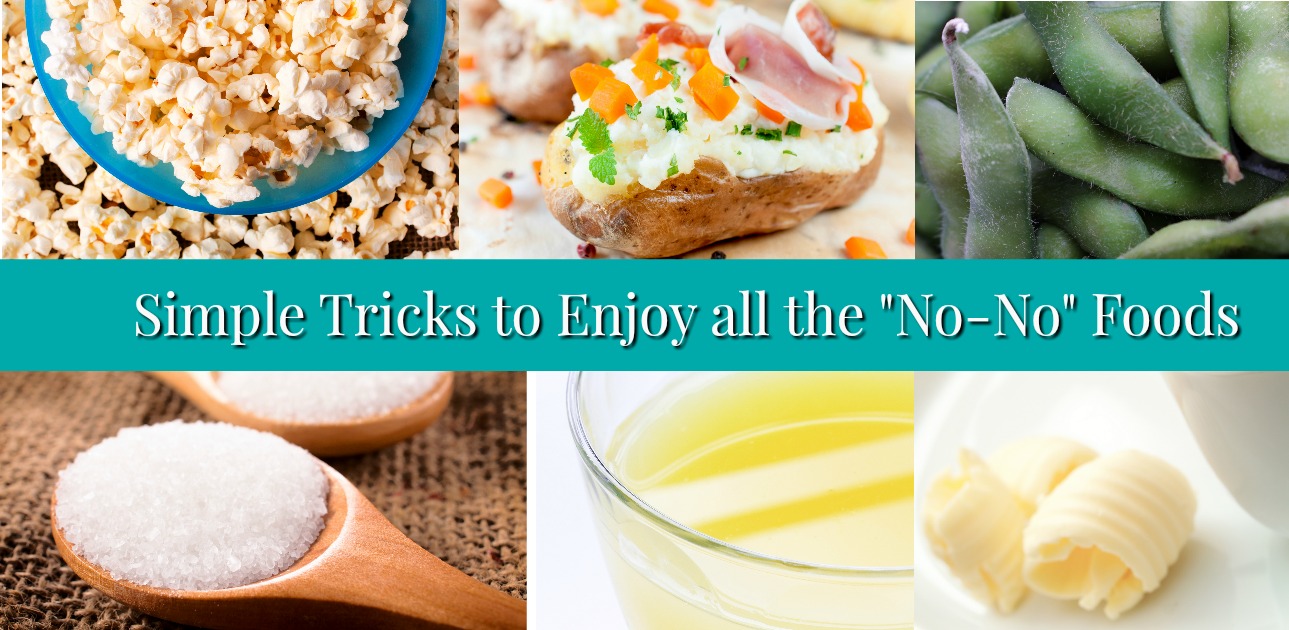And a lot of times we sadly have to give up some of our favorite foods in attempts to be healthier. Yes there are undoubtedly foods you’re best to stay away from since sometimes research shines the light on the dark side of foods.
However, can we really say we’ll never eat microwaved popcorn or potatoes again? Or Chinese foods because of the soy? How can we still enjoy some of these “bad foods” and not feel guilty about polluting our bodies?
This list is created based on some of the top “no-no” foods experts say we all need to avoid. You know the foods you are “never supposed to eat” if you’re trying to be healthy – you’ll see many of them here. The truth is, there are ways around it if you’re needing a salt fix or wanting a bit of sweetness to add to your dessert, etc. Keep in mind that no matter how much we’re trying to eat clean, there will always be impurities & things in food that make it sub-optimal.
Thankfully we have a liver, kidneys & an immune system that helps clean out our bodies so we can still function and thrive in our world.
Here are simple tricks to enjoy all the “no-no” foods!
White Potatoes

- Why it’s bad: Who doesn’t love a good spud every once in a while? But, you know the rule – “stay away from all the white foods” because of their affect on blood sugar. White potatoes contain a lot of starch, and little fiber so they’re absorbed quickly in the blood stream which leaves little time before that sugar is stored as fat.
- A better option: If you boil potatoes vs. baking them it reduces their glycemic index by 45%. If you then refrigerate them after boiling them, it continues to reduce the glycemic index to 75%! Refrigerate long enough for the potato(s) to be chilled all the way through, and heat just until warm if desired.
Soy Protein
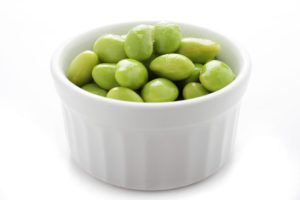
- Why it’s bad: Contrary to what most believe, soy and soy products are not good for you. Most soy that is grown in the Unites States are genetically modified and contain high amounts of glyphosate, the active ingredient in RoundUp weed killer. A recent study in Food Chemistry found “extreme” levels of glyphosate in U.S. soy – which means along with our tofu scramble, glass of soy milk & mid-day edamame snack we’re also eating weed killer. Not to mention, even though the jury is still out, according to an Oxford study soy has been linked to abnormal breast cancer cell growth. It also contains high amounts of estrogen which can be harmful to the thyroid. Studies have found that this threat mainly comes from a diet high in soy – for example if eating soy regularly as a meat alternative, regularly consuming soy milk, soy sauce and other products make from or with soy.
- A better option: The only soy foods with health benefits are USDA certified 100% organic, traditionally fermented soy products such as tempeh, miso and natto. Tamari would be a runner up to traditional soy sauce but coconut aminos is a great soy-free alternative as well.
Canola Oil
- Why it’s bad: One rule to always go by is – don’t eat anything you don’t know what it is. Do you know what a Canola is? Well, there’s no such thing. Canola oil comes from the rape seed. In it’s natural form it’s not too bad of an oil – very versatile, good source of omega 3’s and is a monounsaturated oil much like olive oil. Unfortunately it’s one of the top GMO foods & due to the way it’s mass produced, much of those healthy fats are turned to transfats. However, you don’t see this on the label because it’s not added to the oil, instead it’s something that happens during processing.
- A better option: To avoid the GMO’s & super processing opt for organic cold pressed or organic expeller-pressed canola oil. Also to note: canola oil is a delicate oil, it’s best to be heated no higher than 200-250 degrees. If you’re needing a higher heat oil to cook with, choose coconut oil, ghee, butter or walnut oil.
Table Salt
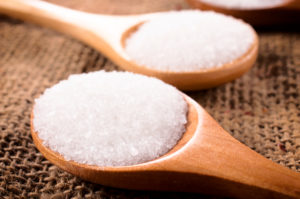
- Why it’s bad: It’s not old news that to help avoid hypertension and steer away heart disease one would need to avoid table salt. However, 95% of restaurants still use it and keep it handy on the tables and food bars. Originally one of the most natural foods we ever consumed is not highly processed – most of it’s naturally containing iodine is removed, replaced with potassium iodine in potentially toxic amounts and dyed white since the super-high-heat processing causes it to turn purple.
- A better option: A much better option is to go back to the original – choose Himalayan Sea salt to promote bone health & sinus health, prevent muscle cramps & support libido. Celtic sea salt is also a great option to replace table salt and liven up your foods.
Agave Nectar
- Why it’s bad: Agave is neither a natural food nor organic. Fully processed agave that is on the shelf is known as hydrolyzed high-fructose inulin syrup. Do you avoid high-fructose corn syrup? Agave has more fructose than HFCS. It’s also not low calorie as some may think – it contains 16 calories per teaspoon – the same as table sugar. According to Dr. Ingrid Kohlstadt, from the American College of Nutrition and an associate faculty member at Johns Hopkins School of Public Health: “[Agave is] almost all fructose, highly processed sugar with great marketing.”
- A better option: Stick with pure unrefined local honey or maple syrup. But of course with all types of sugar, keeping an eye on portion sizes are key!
Factory Raised Meat

- Why it’s bad: Meat that is not organic, free-range, grass-fed is, in my book, the #1 food you should avoid. Here are just a couple reasons why: over 30 million pounds of antibiotics are sold to livestock every year, which has been linked to antibiotic resistance in humans. A 2012 study from John Hopkins looking at feather testing found banned antibiotics, allergy meds, painkillers and depression medications like Prozac in chickens. That means you’re getting a lot more harmful bang for your buck than you’d like. Plus, poultry are being fed arsenic which has resulted in higher levels of toxic arsenic in humans
- A better option: Stick with organic, free-range, grass-fed and wild caught meats. If this is out of your budget, ask your grocery story when meat goes on sale. Because of this, our family never pays more than 1/2 price for organic meat, poultry and fish. Since most restaurants don’t offer organic meat you’re getting factory raised meat. To help avoid antibiotic resistance and support a heathy and strong immune system I recommend everyone, adults & kids alike, take a high quality probiotic.
Margarine
- Why it’s bad: Laden with transfats & fillers margarine is far from a health food. Originally, margarine was formulated to help reduce the amount of dietary cholesterol and saturated fat in efforts to reduce the risk of heart disease. Instead, this chemical storm can do more harm than good. Real food does not cause problems. Foods made in a lab cause problems.
- A better option: Throw it away. Butter or ghee should be the #1 replacement for margarine. Your taste buds will thank you too. However, since there are little nutrients & health benefits in butter & ghee, use them sparingly.
Fruit Juice
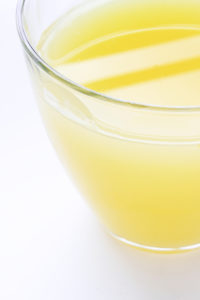
- Why it’s bad: Fruit juice is mainly bad because of the sugar content. Fruit juice is simply all the nutrients & fiber stripped away leaving you with just the sugar. Some fruit juices have more sugar than soda! If you’re trying to make your breakfast or snacks healthier – fruit juice is not the way to go.
- A better option: Make smoothies at home with, my favorite: a NutriBullet, or blender! Just about any “juice” can be made into a smoothie which can hit the spot of wanting something on the sweet side plus leaving you feeling fuller longer and providing more nutrients. Make your smoothies healthiest by adding leafy greens such as spinach & baby kale and healthy fats such as walnuts or coconut milk. Here’s a example of a tasty orange smoothie! (Just use organic yogurt instead.)
Microwave Popcorn
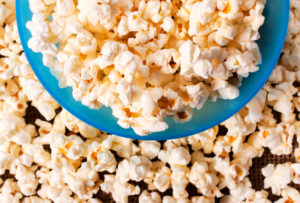
- Why it’s bad: It’s the microwave that’s the bad guy here as much as it is what’s on the lining of the microwave popcorn bag. The main problem is these microwavable bags are coated with nonstick perfluorochemicals like perfluorooctane sulfonate (PFOS) and perfluorooctanoic acid (PFOA), chemicals that are linked to cancer.
- A better option: The optimal choice is the classic on the stove-top method. But a quicker alternative is getting your corn kernels & using a brown bag. Here are instructions on this method of popping popcorn. (Just use coconut oil or butter instead of vegetable oil.) Also my favorite topping is nutritional yeast which gives it an yummy cheese flavor with added benefits!
More references:
American Journal of Epidemiology, 2009;169(4):489-496

